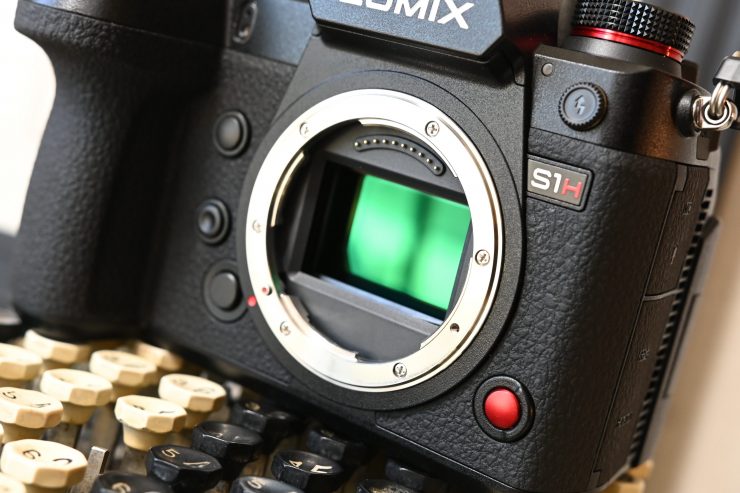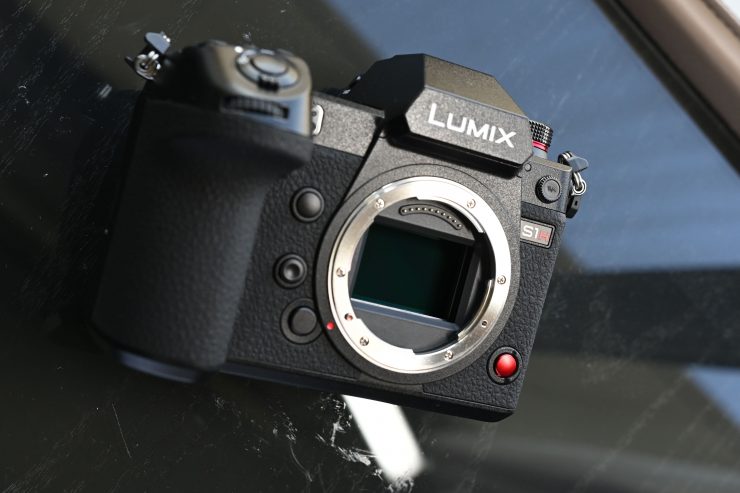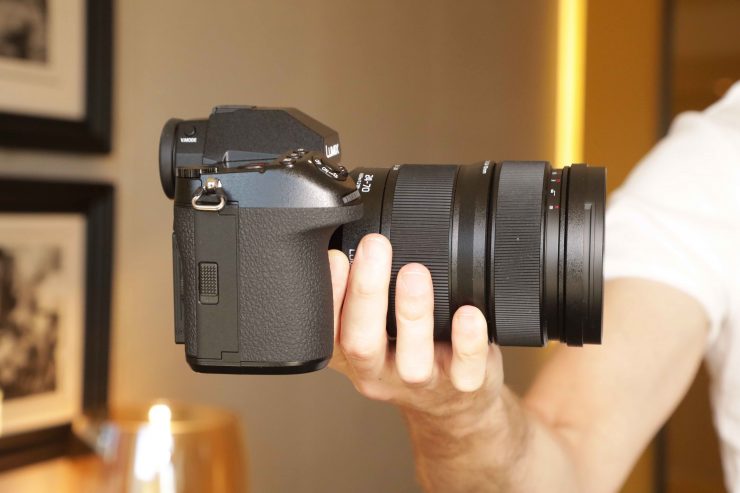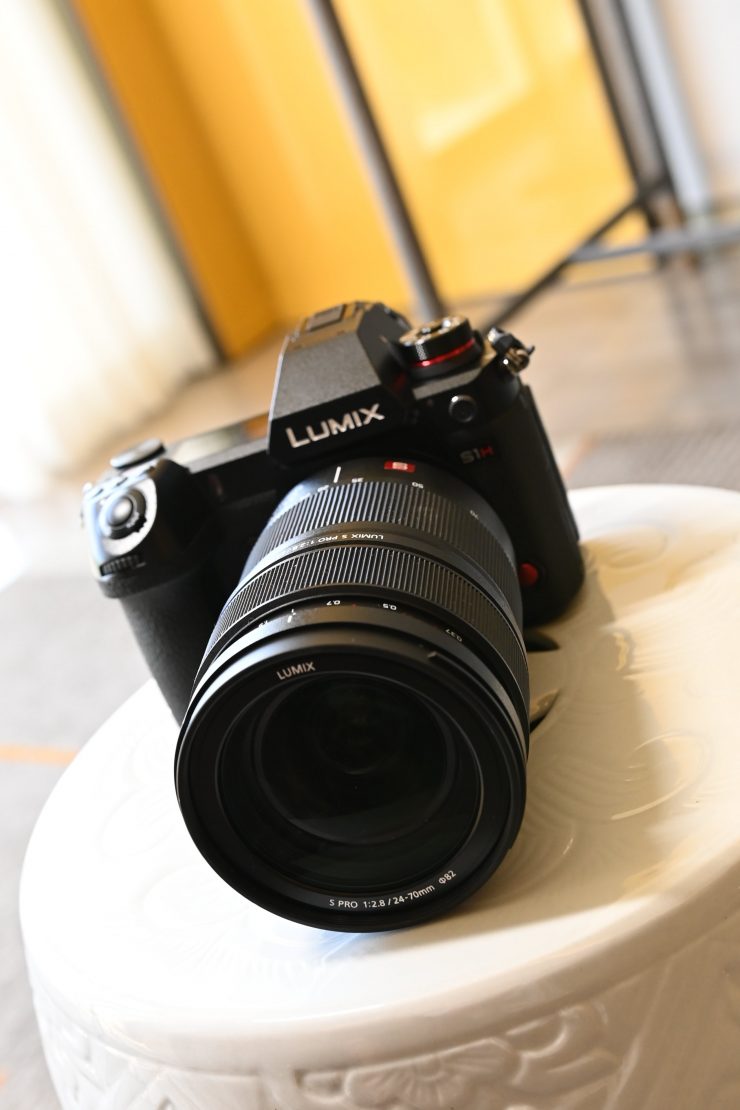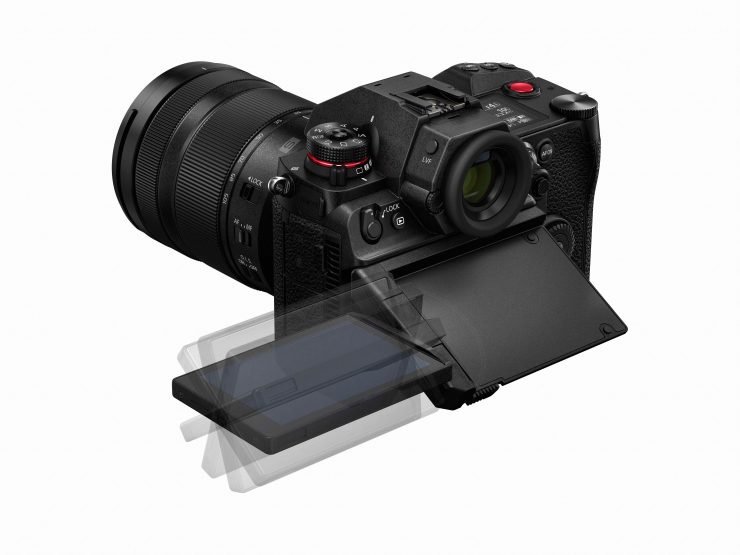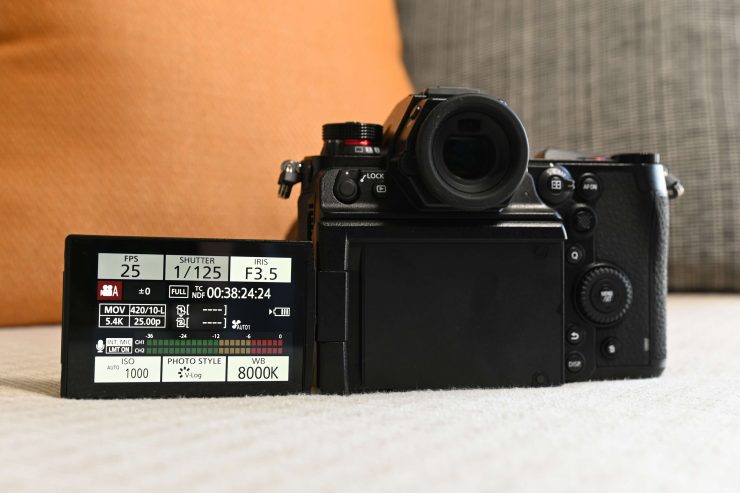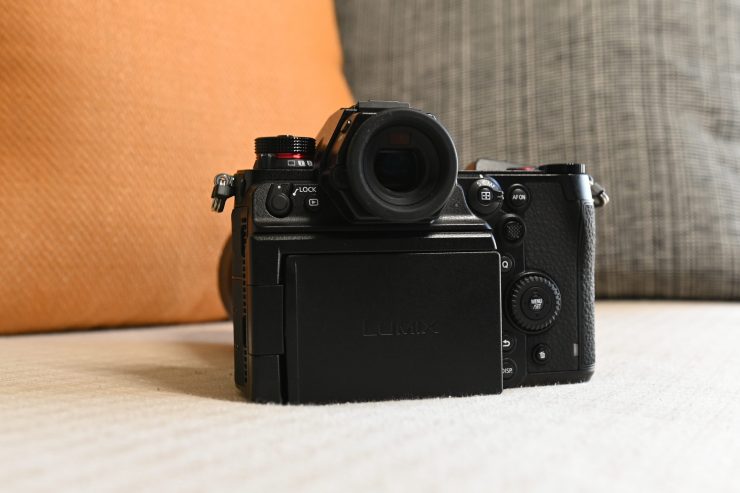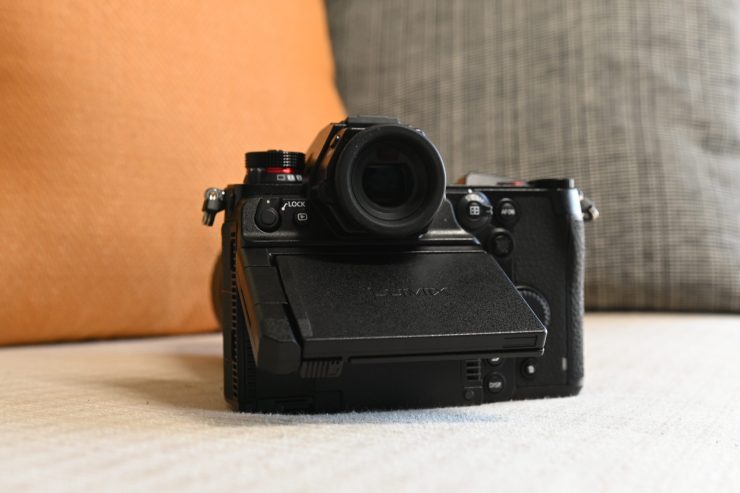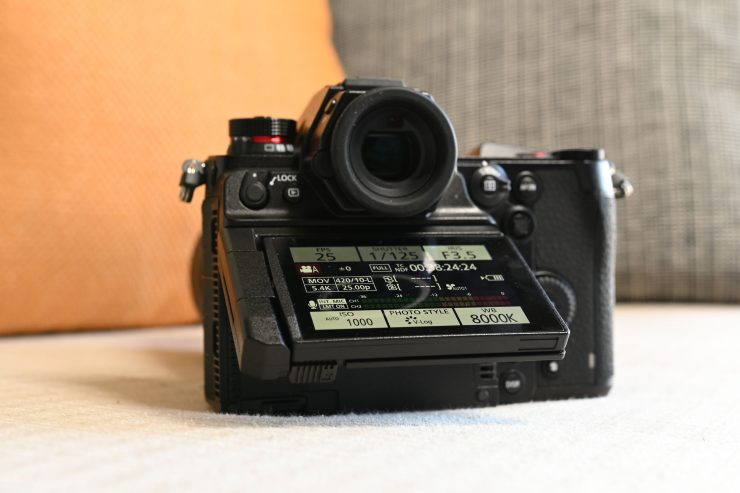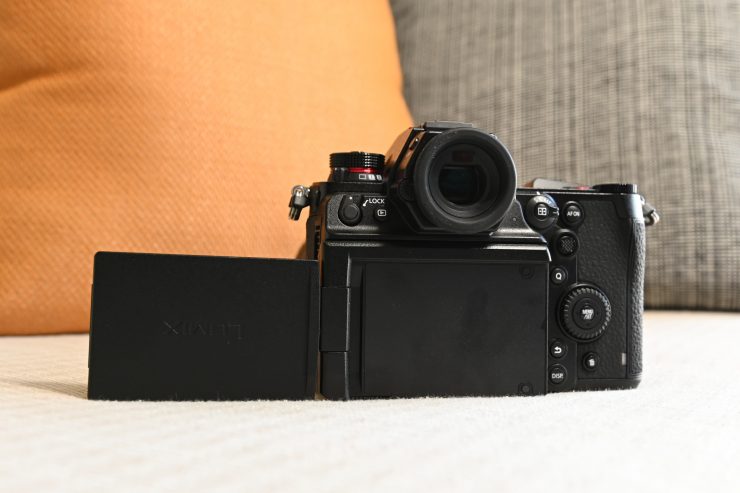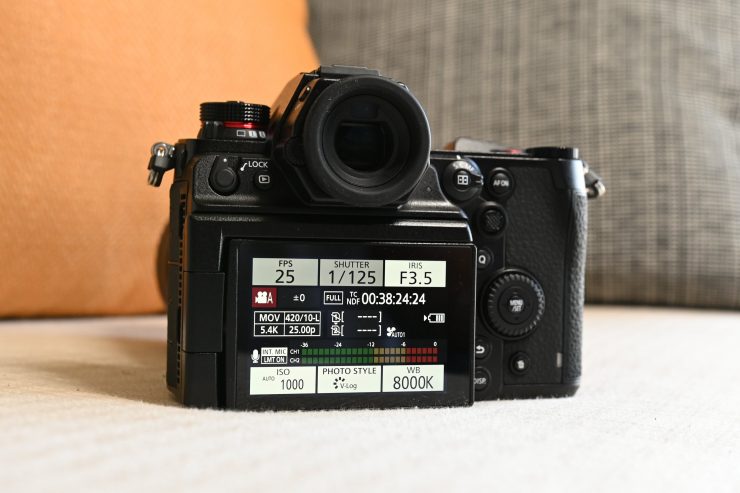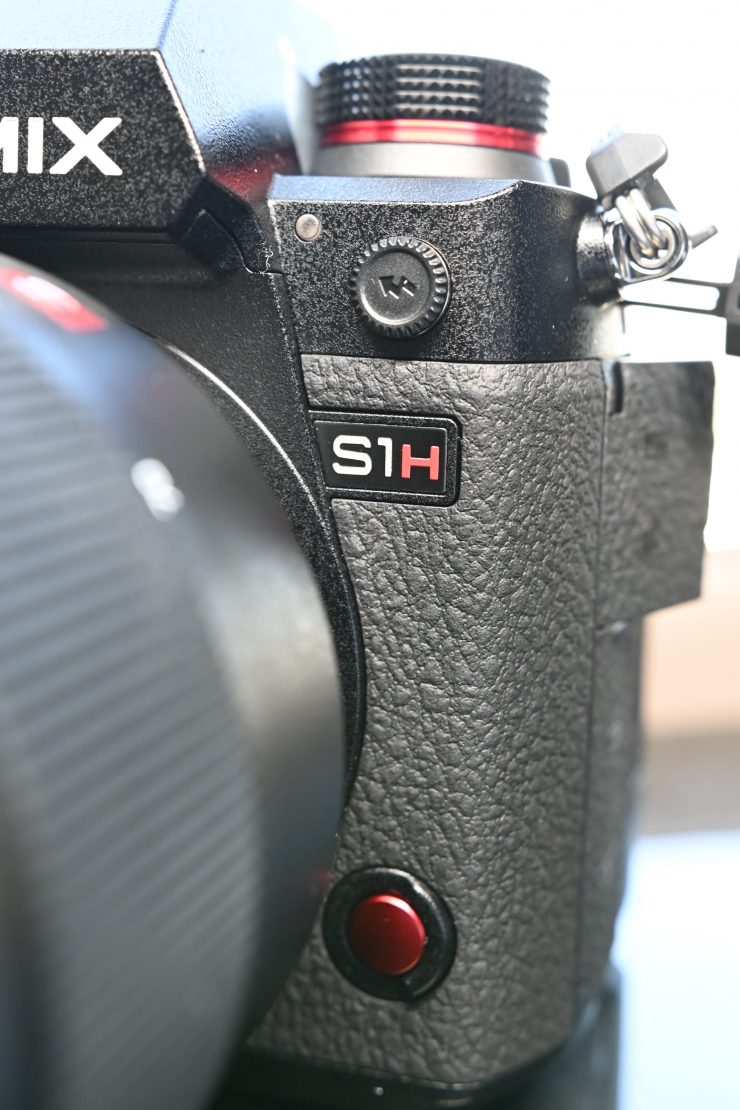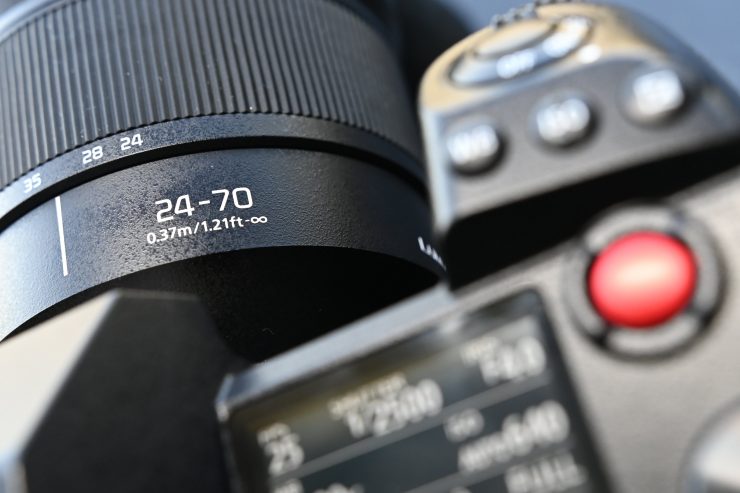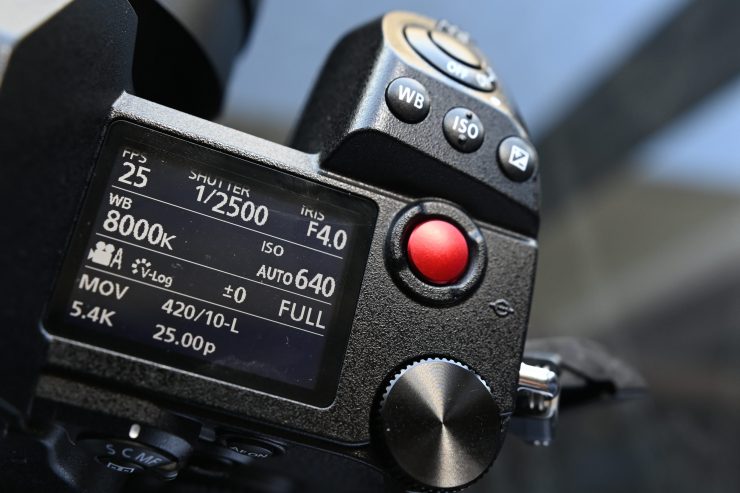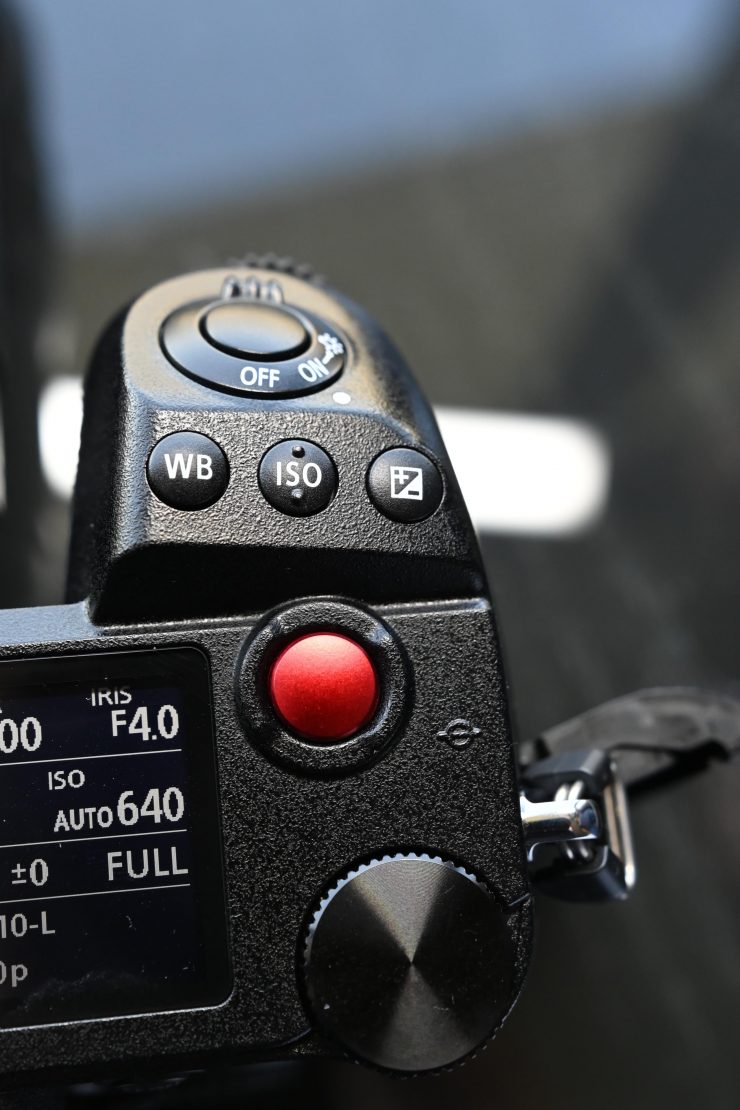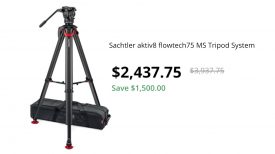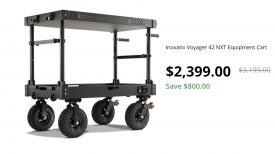
Panasonic has announced the full specifications, pricing, and availability of their flagship full-frame mirrorless LUMIX S1H today and I’m in Hollywood for the big reveal, plus will get some hands-on time as well.
The S1H was first unveiled and teased at Cinegear back in June. At the time Panasonic didn’t divulge much information and we only found out very basic details about the camera.
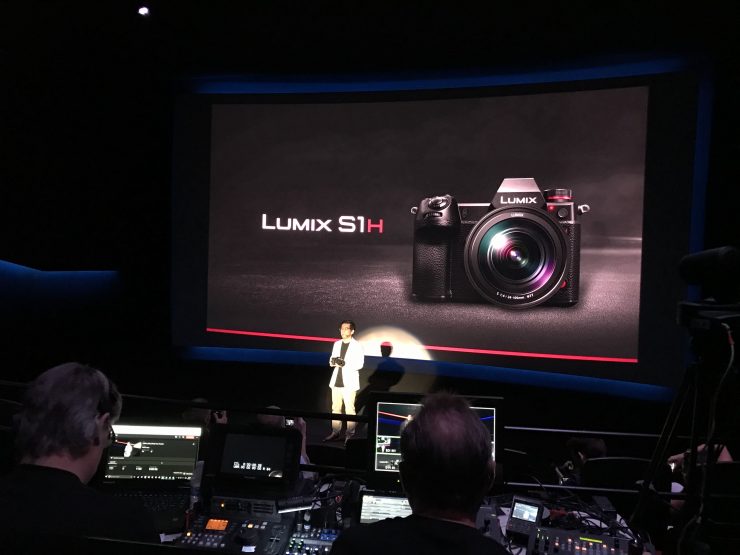
Today at an event in Los Angeles, Panasonic provided us with all the key specifications. We are also getting hands-on time with a pre-production version of the camera. Please check back on the site for our first impressions.
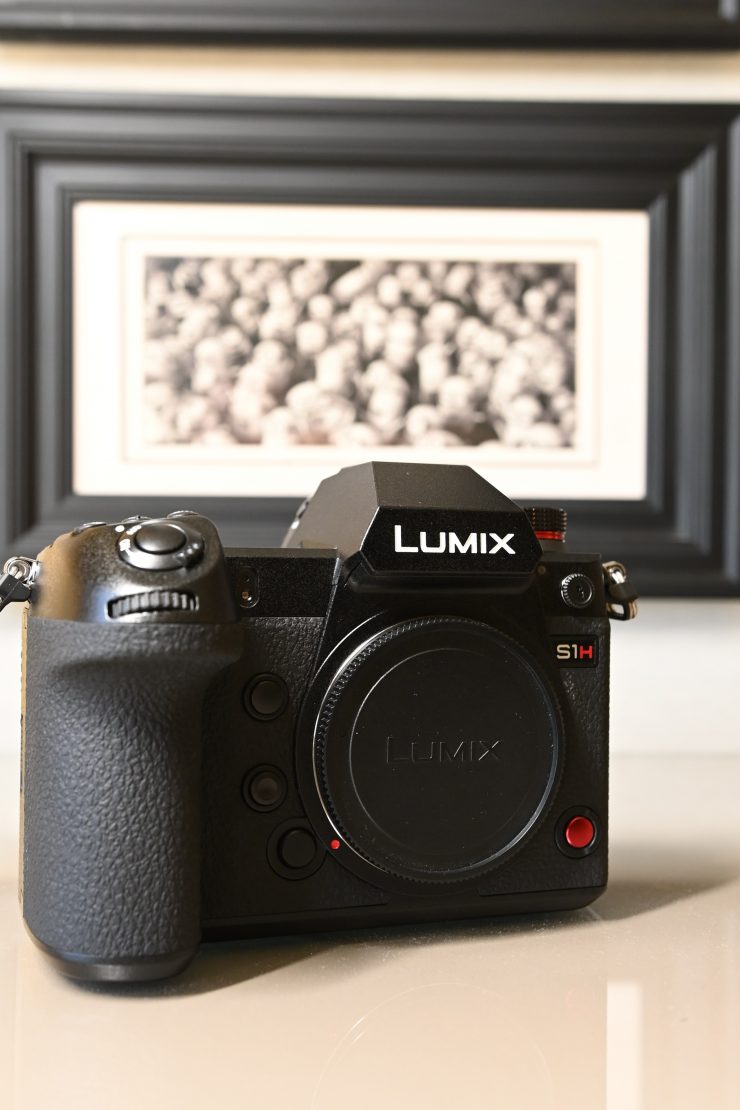
Key Specifications
- 6K (5952 x 3968) 3:2
- 5.9K (5888 x 3312)
- 5.4K (5376 x 3580) 3:2
- 4K DCI and UHD up to 60p
- Full HD up to 180fps
- Dual SD card Slots
- Tilt and rotatable flip screen
- Dual Native ISO of 640 and 4000
- Unlimited recording times in all modes
- 5-axis in-body stabilization
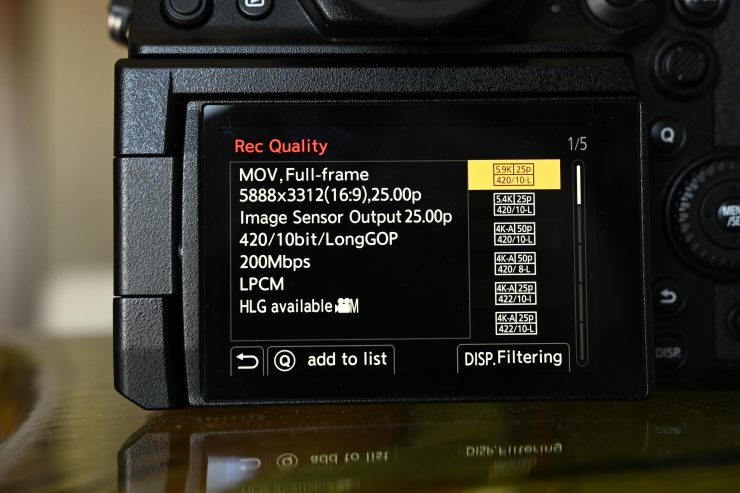
On paper, the specifications are certainly impressive. The S1H is the World’s first full-frame mirrorless camera capable of recording at 6K (5952 x 3968 23.98p (3:2 aspect ratio), 5.9K (5888 x 3312) up to 30p (16:9 aspect ratio), and 5.4K 5376 x 3584 (3:2), So what bitrate and codec can you do this in?
| 6K (5952 x 3968) 23.98p/24p (3:2 aspect ratio) | 200Mbps (4:2:0 10-bit LongGOP) H.265/HEVC |
| 5.9K (5888 x 3312) 23.98p/24p/25p/29.98p | 200Mbps (4:2:0 10-bit LongGOP) H.265/HEVC |
| 5.4K (5376 x 3584) 23.98p/24p/25p/29.98p(3:2) | 200Mbps (4:2:0 10-bit LongGOP) H.265/HEVC |
The S1H is also the world’s first full-frame digital interchangeable lens system camera to enable 10-bit 60p 4K/C4K HEVC video recording. Now, there is a slight catch, to do this the camera is using an image area equivalent to Super 35mm. You can only record 4:2:2 10-bit from the full area of the sensor when shooting 4K/UHD (up to 30p). Below you can see what bitrate and codec you can record 4K DCI and UHD in.
Full Frame
| C4K 4096×2160 23.98p/24p/25p/29.97p | 400Mbps (4:2:2 10-bit ALL-Intra) 150Mbps (4:2:2 10-bit LongGOP) 100Mbps (4:2:0 8-bit LongGOP) H.264/MPEG-4 AVC |
| UHD 3840×2160 23.98p/24p/25p/29.97p | 400Mbps (4:2:2 10-bit ALL-Intra) 150Mbps (4:2:2 10-bit LongGOP) 100Mbps (4:2:0 8-bit LongGOP) H.264/MPEG-4 AVC |
Super 35mm / Pixel by Pixel
| C4K 4096×2160 50p/59.94p/47.95p | 200Mbps (4:2:0 10-bit LongGOP) H.265/HEVC 150Mbps (4:2:0 8-bit LongGOP) H.264/MPEG-4 AVC |
| C4K 4096×2160 23.98p/24p/25p/29.98p | 400Mbps (4:2:2 10-bit ALL-Intra) 150Mbps (4:2:2 10-bit LongGOP) 100Mbps (4:2:0 8-bit LongGOP) H.264/MPEG-4 AVC |
| Anamorphic 4K 3328×2496 48p/50p (4:3) | 200Mbps (4:2:0 10-bit LongGOP) (H.265/HEVC 150Mbps (4:2:0 8-bit LongGOP) H.264/MPEG-4 AVC |
| Anamorphic 4K 3328×2496 23.98p/24p/25/p/27.95p (4:3) | 400Mbps (4:2:2 10-bit ALL-Intra) 150Mbps (4:2:2 10-bit LongGOP) 100Mbps (4:2:0 8-bit LongGOP) H.264/MPEG-4 AVC |
As a comparison, it’s baby brother, the S1, requires an optional paid update to get 4K 30p 10-bit 4:2:2 internal recording, and 4K 60p external recording with V-Log. On the S1H all of this can be done internally and without need for a license.
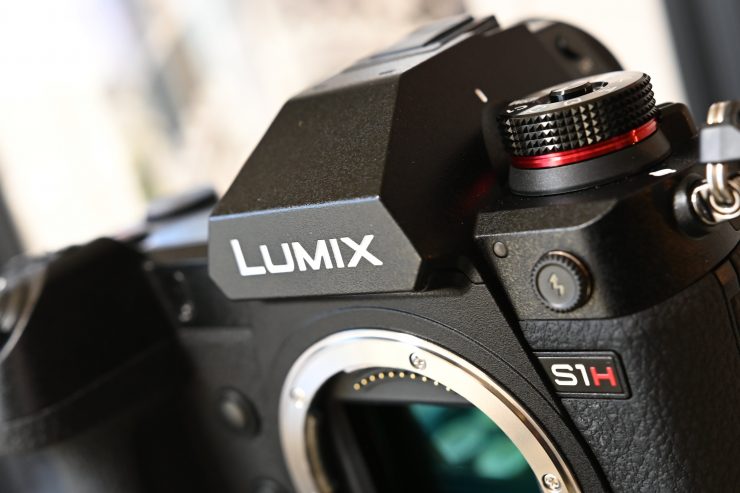
In Full HD, the S1H can shoot in the following frame rates and codecs:
Full Frame & Super 35mm / Pixel by Pixel
| HD 1920×1080 23.98p/24p/25p/27.98 | 200Mbps (4:2:2 10-bit ALL-Intra) 100Mbps (4:2:2 10-bit LongGOP) 100Mbps (4:2:0 8-bit LongGOP) H.264/MPEG-4 AVC |
| HD 1920×1080 47.95p/48p/50p/50i*/59.94p/59.94i* | 200Mbps (4:2:2 10-bit ALL-Intra) 100Mbps (4:2:2 10-bit LongGOP) 100Mbps (4:2:0 8-bit LongGOP) H.264/MPEG-4 AVC *50i and 59.94i can also be recorded in 50Mbps (4:2:2 10-bit LongGOP) H.264/MPEG-4 AVC |
| HD 1920×1080 100p/119.88p | 150Mbps (4:2:0 10-bit LongGOP) H.265/HEVC |
Making sense of it all
The camera certainly does offer a lot of frame rate and resolution options, but it does get slightly confusing working out what is available.
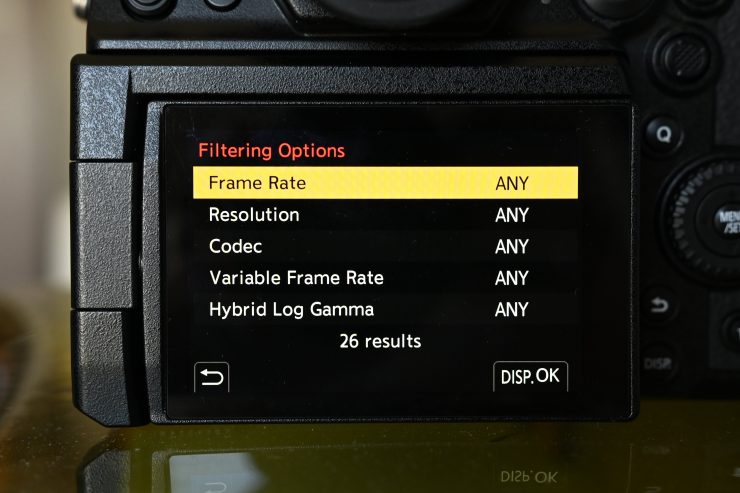
To try and make this a bit easier, Panasonic has come up with a menu function that helps tell you what codec and frame rates are available at certain resolutions. It does this by a process of elimination.
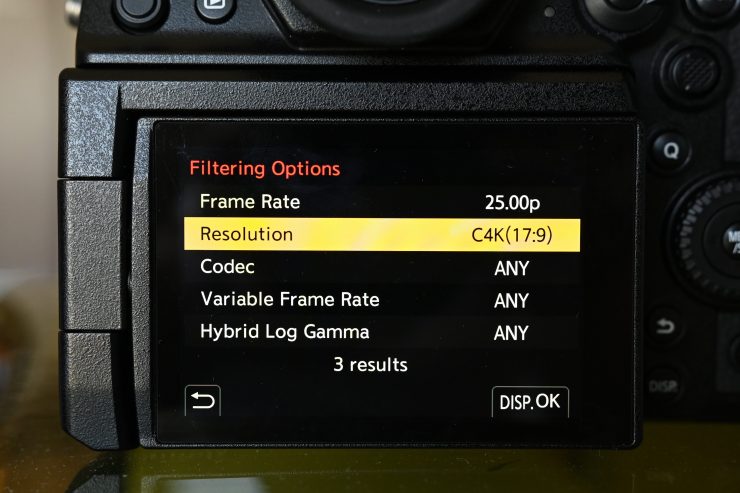
The more options you filter, the smaller the number of results becomes until you are left with only the options that are possible.
The S1H is arguably the first full-frame mirrorless that probably doesn’t require an external recorder to obtain the best image quality. Yes, you could argue that recording externally in ProRes 422HQ may be better, but I think the beauty of the S1H is that you don’t need to.
Variable Frame Rates
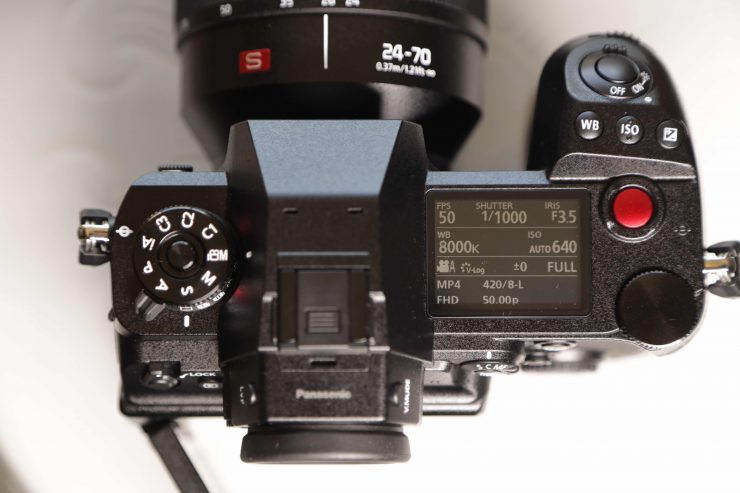
The VFR (Variable Frame Rate) lets users record over-cranked / under-cranked video in C4K/4K (60fps, maximum 2.5x slow motion in 24p) and FHD (180fps, maximum 7.5x slow motion in 24p). The minimum frame rate for quick motion video is 2fps. In addition, HFR (High Frame Rate) video with sound is also recordable with active auto focus.
The S1H is capable of Full HD up to 180 fps recording at 100Mbps (4:2:0 8-bit LongGOP) H.264/MPEG-4 AV. What you need to factor in is that angle of view narrows if you select a frame rate that is over 151fps.
Anamorphic shooting
The S1H has a 4K 3328 x 2496 (4:3) anamorphic shooting mode.
What does it record to?
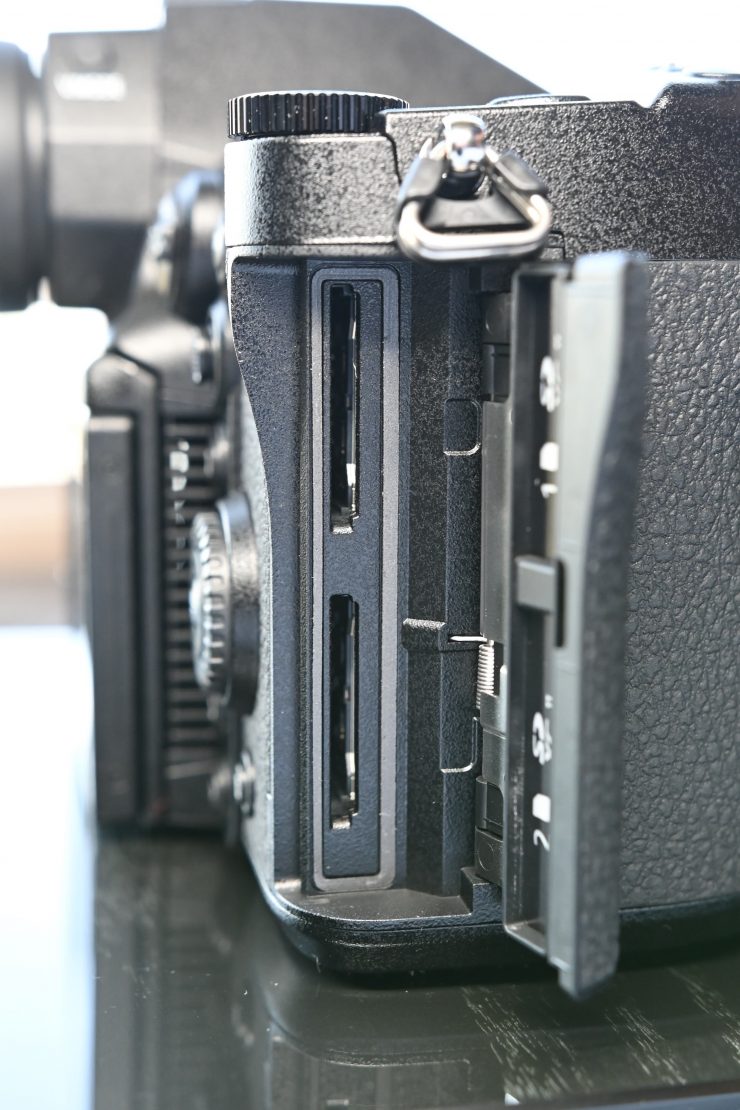
The S1H features dual SD memory card slots that are compatible with the high-speed, high-capacity UHS-II and Video Speed Class 90 cards. Users have the flexibility to choose the recording method from Relay Recording, Backup Recording or Allocation Recording which enables the saving of video and photo data on separate cards. The SD Cards are hot-swappable so you can continuously record for hours on end or at least until the battery dies.
It is interesting to see that Panasonic has decided to stick with SD cards as the recording medium, instead of choosing CFast 2.0 or CF Express.
The S1H also has a very powerful first. It can record internally as well as simultaneously recording to an external recorder however the internal recording is limited to 4:2:0 10-bit.
V-Log/V-Gamut
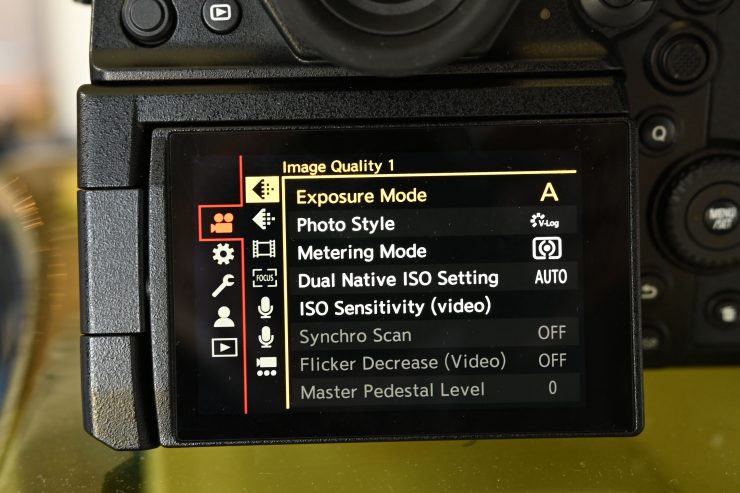
Unlike with the S1 and S1R, the S1H has V-Log/V-Gamut included as standard. With the video-centric S1, if you want to record internal 60p 4:2:2 10 bit and V-Log you need an update key similar to the GH5.
According to Panasonic, the S1H’s recorded footage is compatible with V-Log footage recorded by VariCam or V-Log L footage recorded by other LUMIX cameras such as the GH5/GH5S and S1.
It’s nice to see that Panasonic has included V-Log/V-Gamut in S1H and not made it a paid option.
Practical tools like a Waveform Monitor and V-Log View Assist are also available on the S1H.
Sensor
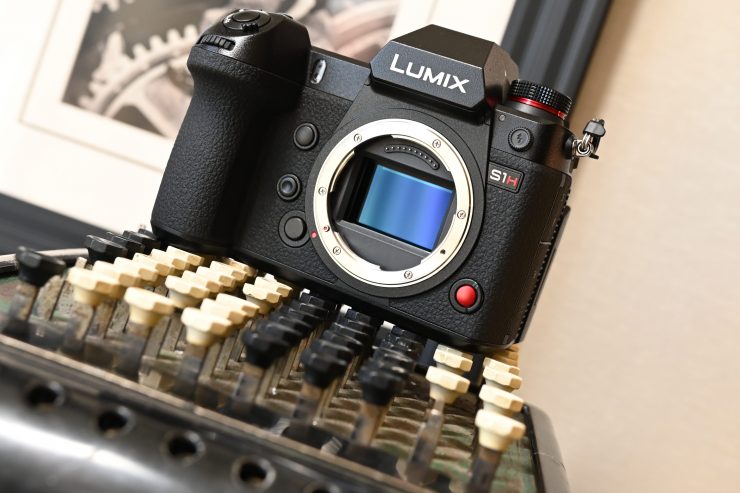
The S1H is using a 24.2-megapixel 35mm full-frame CMOS sensor (35.6 mm x 23.8mm) that’s capable of capturing 6K resolution video and still images measuring 6,024 x 4,016 pixels. The camera has an OLPF (Optical Low Pass Filter) to suppress moiré while the S1 does no. Signal processing is done by the Venus Engine.
Panasonic told us that this is not the same sensor that is used in the S1.
Dual Native ISO
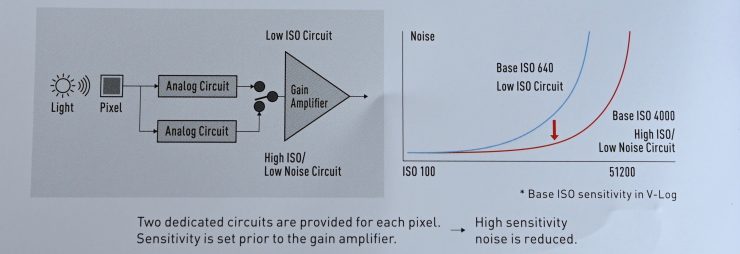
Unlike the S1, the S1H has a dual native ISO. The S1H’s Dual Native ISOs are 640 and 4000. Normally noise increases as sensitivity rises with a single native ISO image sensor. However, the new image sensor with Dual Native ISO in the S1H is claimed to minimize noise generation by choosing the optimum circuit to use before gain processing, according to the ISO sensitivity that is set.
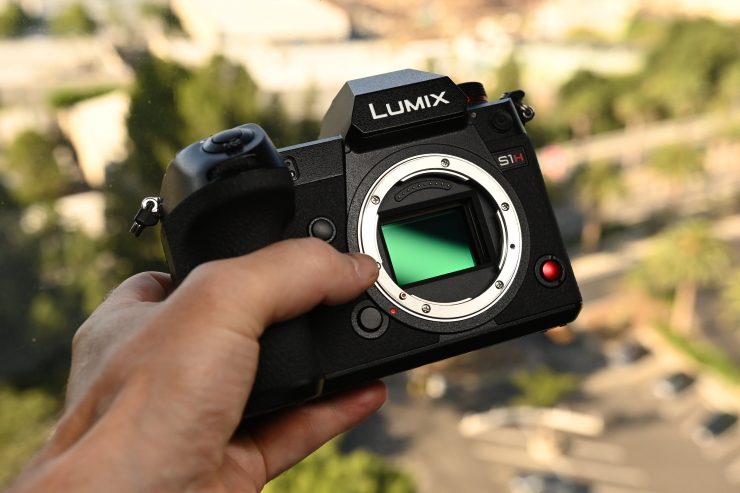
This Dual Native ISO feature can be switched manually between LOW (ISO 640-5000) and HIGH (ISO 4000-51200), or left in AUTO mode for the camera to make the decision for you
I.S
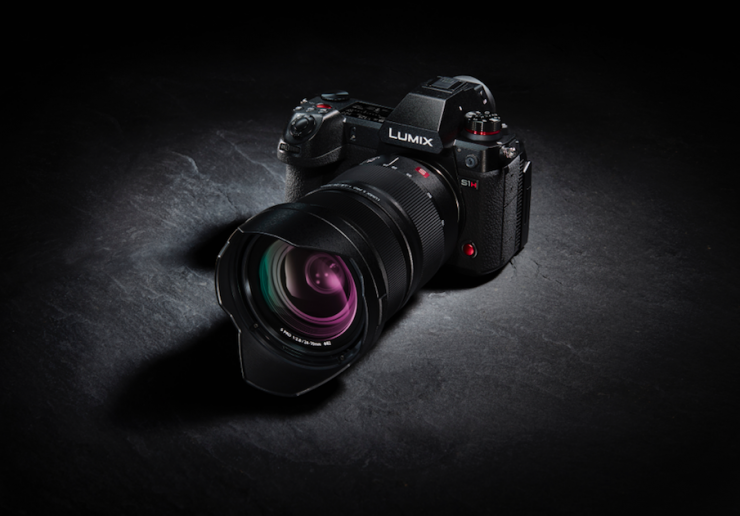
The S1H integrates Body I.S. (Image Stabiliser). Panasonic has developed an algorithm that is claimed to precisely calculates shake using information acquired not only from a gyro-sensor but also from the image sensor and an accelerometer sensor within the body of the camera. This is said to enable more accurate shake detection and compensation
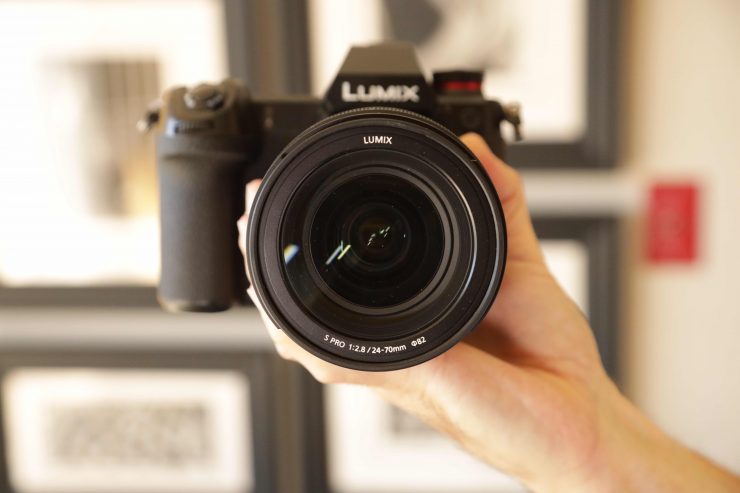
By combining the Body I.S. (5-axis) in the camera and the O.I.S. (Optical Image Stabiliser, 2-axis) in the LUMIX S Series lens, the 5-axis Dual I.S. compensates for larger movements than are controllable by conventional methods. Maximizing both O.I.S. and B.I.S. is claimed to give users up to 6.5-stops of compensation.
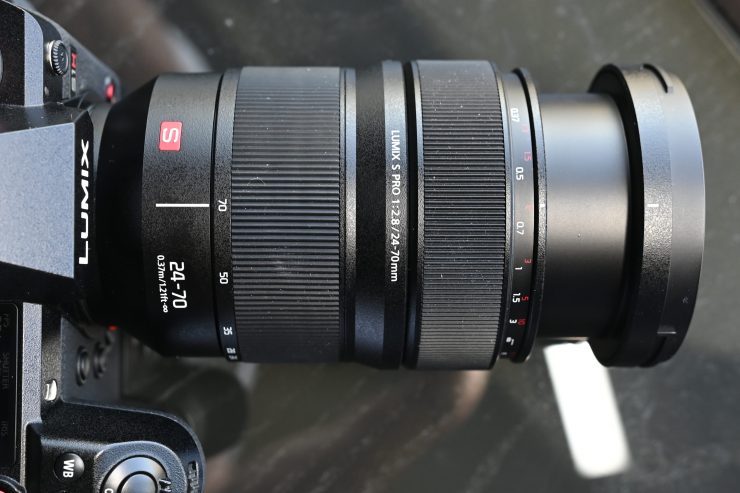
The 5-axis Dual I.S. 2 works for both photo and video modes, including 4K, 6K, and anamorphic recording. The Body I.S. compensates for camera movement even when L-Mount lenses without O.I.S. are used and when other lenses are fitted via an adapter
Samples shot with the S1H
Menu System
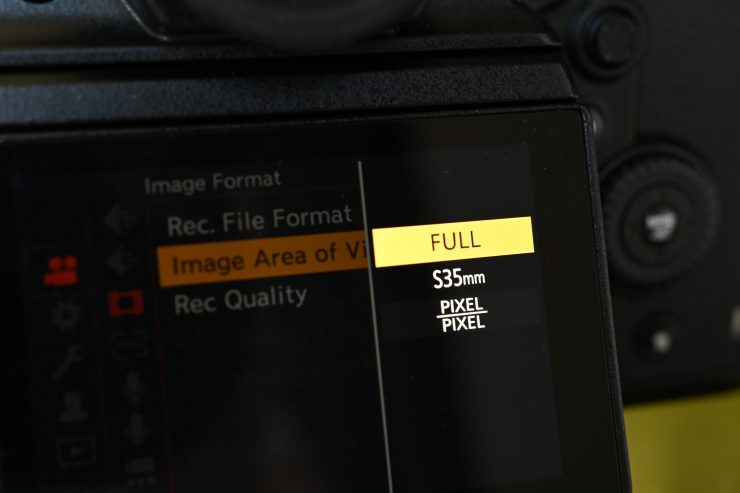
The menu system is fairly similar to any other hybrid mirrorless camera, and if you aren’t familiar with an S1 it will take you a bit of time to get used to it.
As this is a video-centric camera I would have preferred to have seen Panasonic make a way where you could disable or not show all the stills menus when you are shooting video. This way it would make for a lot cleaner and more straight forward way of making changes.
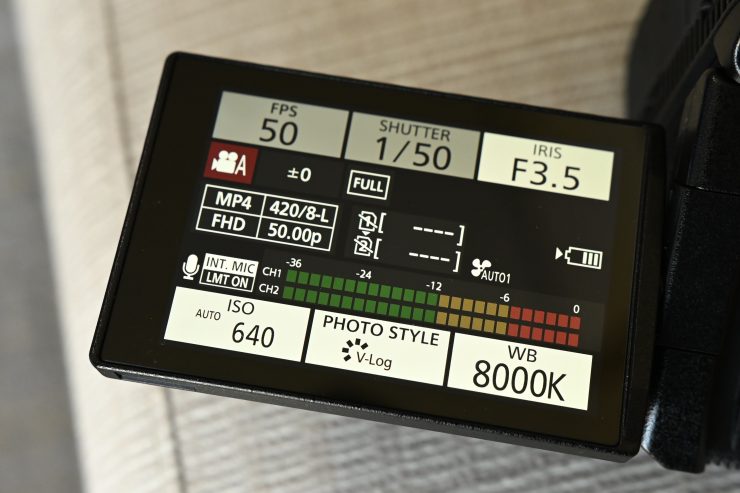
The S1H does have a nice display you can bring up which looks fairly similar to what you would find on an EVA1 or Varicam LT.
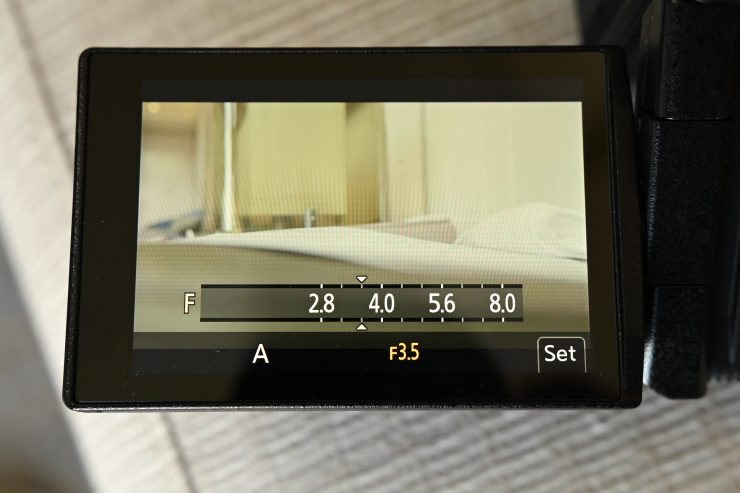
You can make changes to these items by touching the screen, but that then takes you to another screen. It would have been nice to see a way where you could toggle around on this screen and make changes to your key shooting parameters such as ISO, shutter speed, fps, and white balance.
Similar form factor as the S1 & S1R
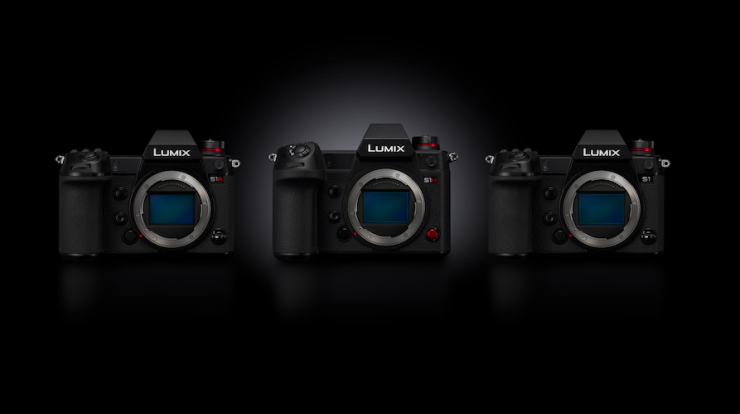
The S1H is a sister camera to the S1 and the S1R. It shares a similar form factor and looks. It is, however, slightly taller and wider.
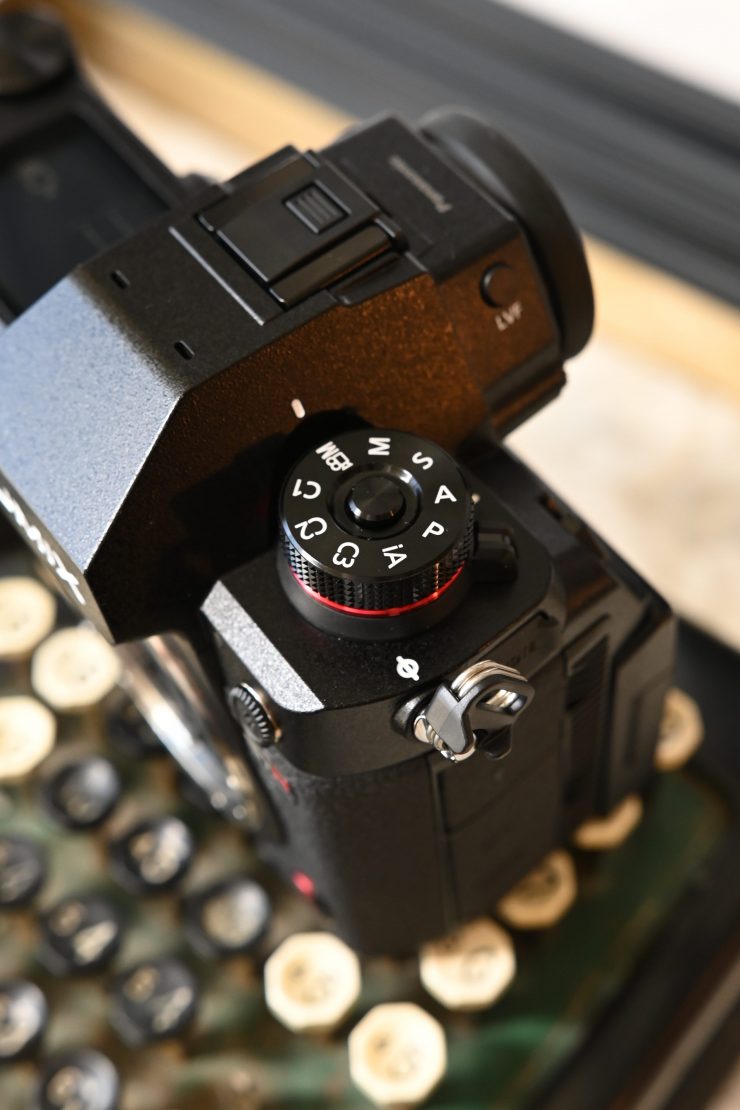
The S1H weighs in at Approx. 1,052g / 2.32 lb (Body only). This makes it heavier than the S1 2.25 lb / 1021 g (Body with Battery and Memory).
Just like the S1 and S1R, the S1H is quite large for mirrorless cameras. The camera is much larger than the Sony Alpha cameras and larger than the Nikon Z and Canon R. It is also a lot heavier.
This does provide some advantages though. Panasonic is able to squeeze in two card slots (larger batteries, plenty of cooling and ergonomically, just like the S1 and S1R, it should be quite nice to hold.
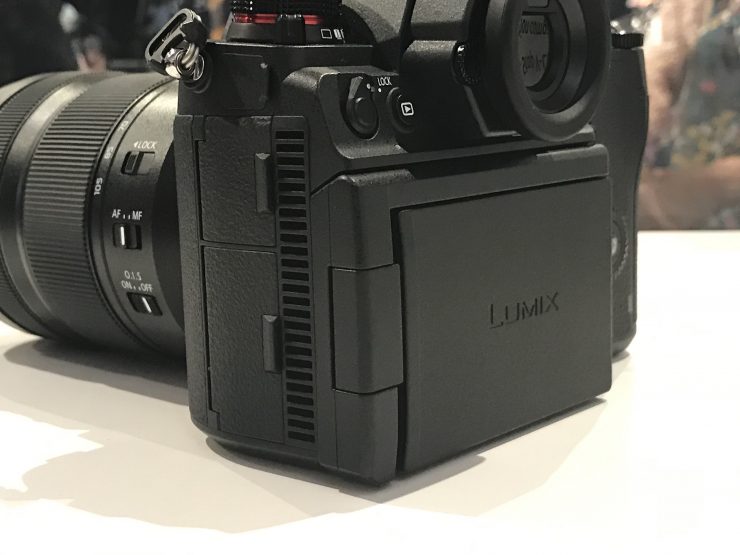
Tilt & Rotatable Screen
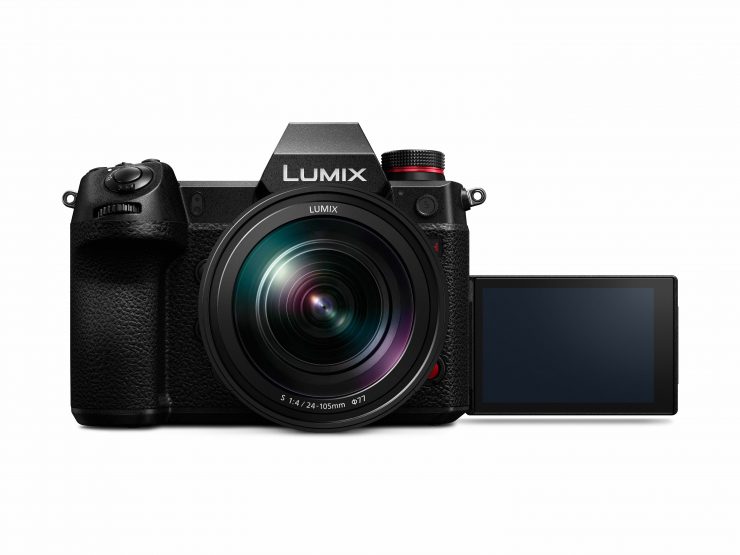
The camera has a 3.2″ fold out monitor that looks similar to the one that on the GH5, however, it can tilt and fold.
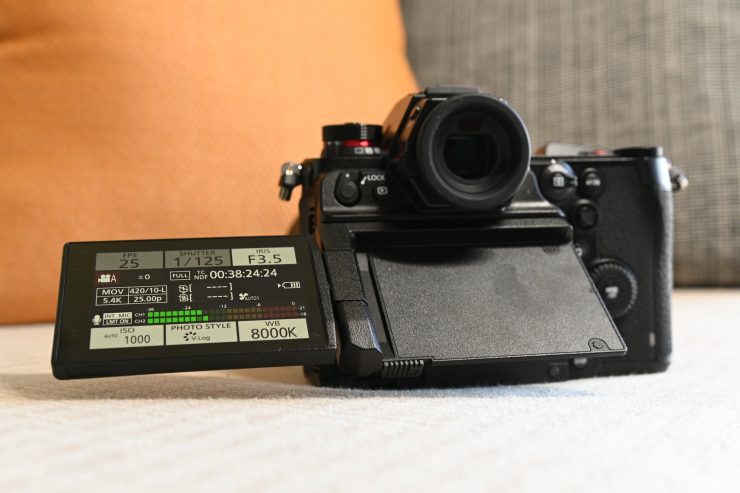
The 3.2-inch, 2,330K-dot 3:2 aspect rear touch-screen monitor features approximately 150% higher luminance compared with the S1R/S1, GH5 and GH5S for improved visibility when the camera is used outdoors in bright conditions. Adopting a new mechanical structure, the rear display features both tilt and rotation movement so that users can easily change angles without unplugging or clashing with HDMI and USB cables.
Live View Boost is another practical feature that makes it possible to check composition even in total darkness by boosting screen brightness just for live view. The S1H also incorporates a Night Mode that provides more moderate backlighting so the user’s eyes don’t have to adjust to comfortably see a subject right after viewing the monitor in dark situations.
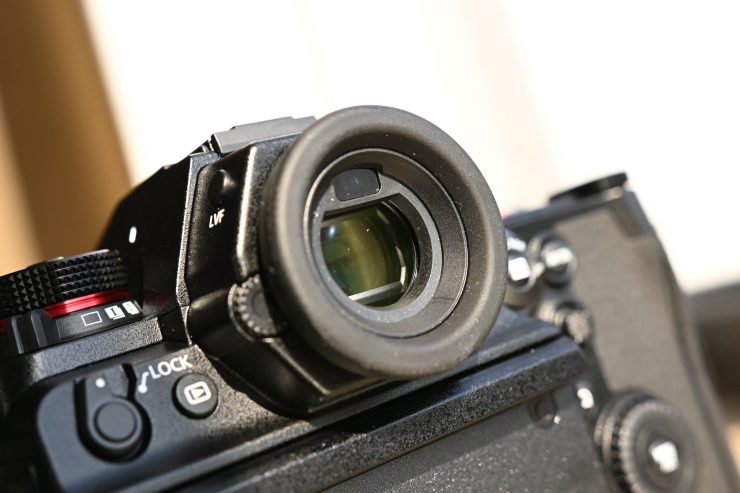
The camera has the same Real View Finder as the S1 and S1R, which boasts the world’s highest resolution of 5,760k dots. The 0.78x magnification ratio can be switched to 0.7x or 0.74x according to the shooting situation, and the use of a high-speed, high-precision OLED for the LVF provides a smooth display that refreshes at 60fps/120fps (switchable). The EVF has a high-speed response, with a lag of approximately 0.005 sec, as well as 10,000:1 high contrast.
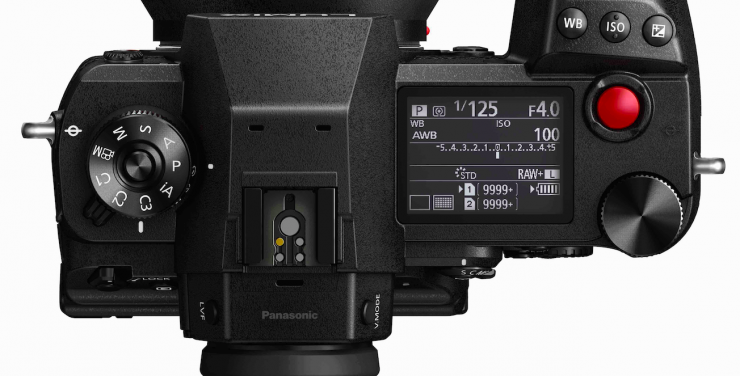
The new Status LCD information panel on the top plate is the largest-in-class, measuring 1.8-inch. Adopting MIP (Memory In Pixel technology), it is said to consume very little power so is able to be kept on even when the camera is switched off. It shows the recordable time for video, number of images remaining and battery level with a black/white switchable background. It assures high visibility both in bright outdoor and in dark situations thanks to a reflective LCD that can be backlit. Major settings for photo shooting or video recording are displayed. The response of the LCD is also fast enough for time code counting and audio monitoring.
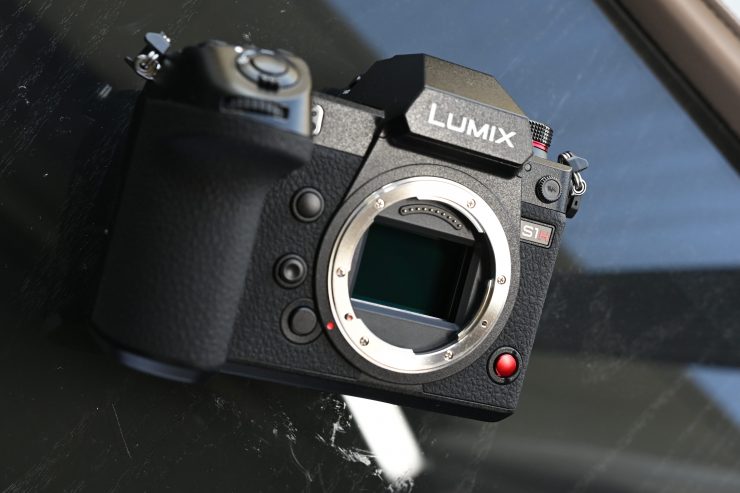
The LUMIX S1H has multiple Fn (function) buttons on the front panel of its body that allow quick access to the designated functions. An additional video button is positioned on the lower part of the left of the camera front so the user can also activate recording with the left hand when the right hand is occupied, with holding a cage or gimbal for example. Most of the buttons can be customized to assign the camera’s functions to suit the photographer’s operating style and needs.
Auto Focus
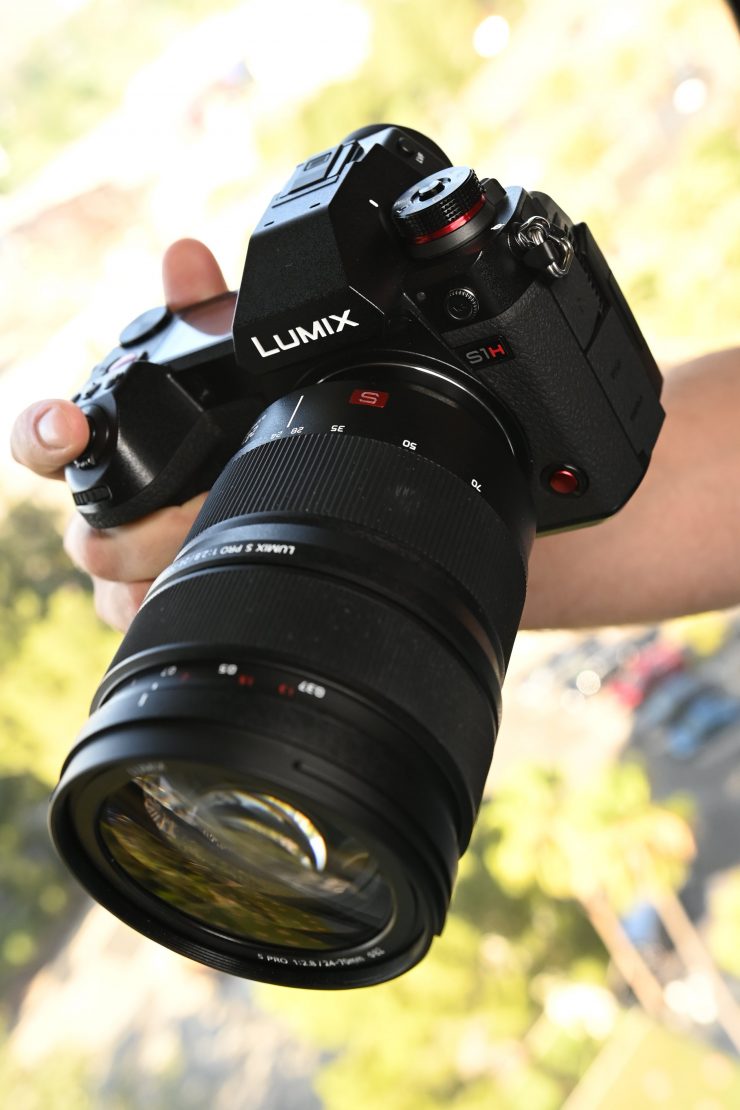
The S1H uses a Contrast AF system. You can select AFS (Single), AFC (Continuous), or MF (Manual Focus).
You can use Continous Auto Focus when shooting video. Just how well the autofocus works on the S1H will be interesting to see. I expect that it won’t be any better than that of the current S1.
The autofocus also works when shooting in high frame rates plus audio is also recorded.
There is also:
- Auto Detection (Face, Eye, Body, Animal)
- Tracking / 225-Area
- Zone (Vertical/Horizontal) / Zone (Square) / Zone (Oval) / 1-Area+ / 1-Area / Pinpoint / Custom 1, 2, 3
- (Full area touch is available) (Scalable AF frame size and flexible AF position)
Power & Other Accessories
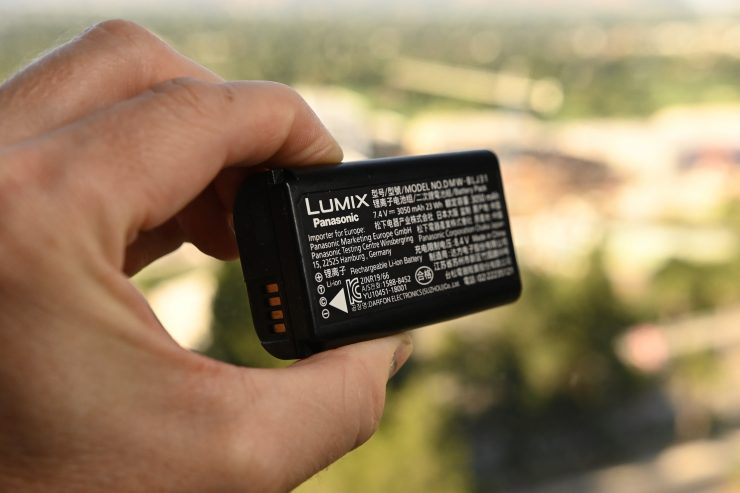
The S1H uses the same batteries as the S1 and S1R, the DMW-BLJ31. It has a 3,050mah capacity. For extended shooting, you should be able to add the DMW-BGS1 battery grip which can hold another battery and connects via electronic contacts rather than a dummy battery like other battery grips. The grip retails for $349.99 USD.
The 7.4-V 3,050mAh high-capacity battery can achieve continuous recording times of approximately 2 hours in all recording modes. The battery can be quickly charged via USB PD (USB Power Delivery) using the bundled USB3.1 Type-C cable. The battery charger also complies with USB PD and enables quick power charging in approximately two hours. The camera can be used while charging via this adaptor.
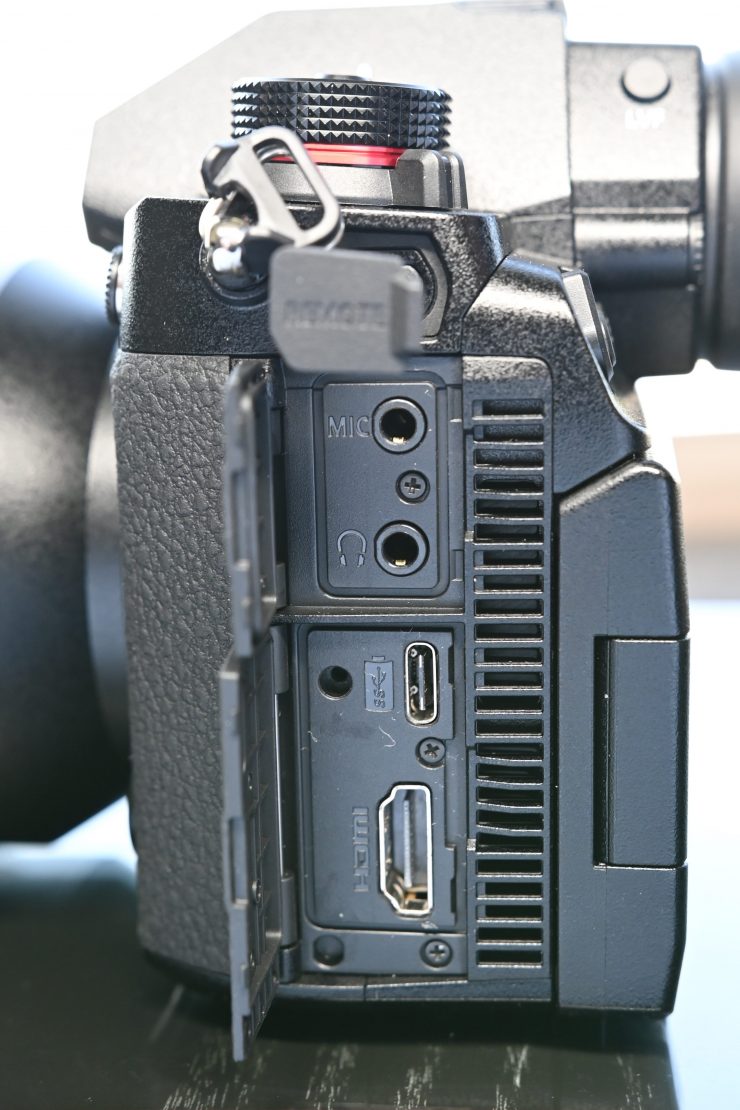
The camera has a USB Type-C port that allows for fast file transfers Additionally, there is an HDMI Type A port, a 2.5mm port can be used with the optional DMW-RS2 Remote Shutter, and 3.5mm microphone and headphone jacks.
A variety of accessories can be used for the S1H. A Microphone Adaptor (DMW-XLR1), Remote Shutter (DMW-RS2), Eyecup (DMW-EC6), Battery Grip (DMW-BGS1), Battery Charger (DMW-BTC14) and so on. The Microphone Adaptor is a hotshoe-mounted adaptor for up to two XLR microphones to record high-quality stereo sound. Dedicated switches allow direct, quick control, and MIC, LINE and CONDENSER MICROPHONES are switchable.
The S1H offers 4:2:2 10-bit 4K 60p/50p HDMI output via a Type A terminal that allows the included cable-lock holder to be used to prevent accidental unplugging and interruptions to recording.
It is also compatible with Time Code IN/OUT synchronization through the flash synchro terminal and comes bundled with a BNC converter cable and a BNC cable. This makes it easy to synchronize the non-linear editing of footage shot with multiple cameras. The feature was also included in the GH5, however, the timecode drifted very quickly. Hopefully, the SiH improved on the issue.
What about the heat?
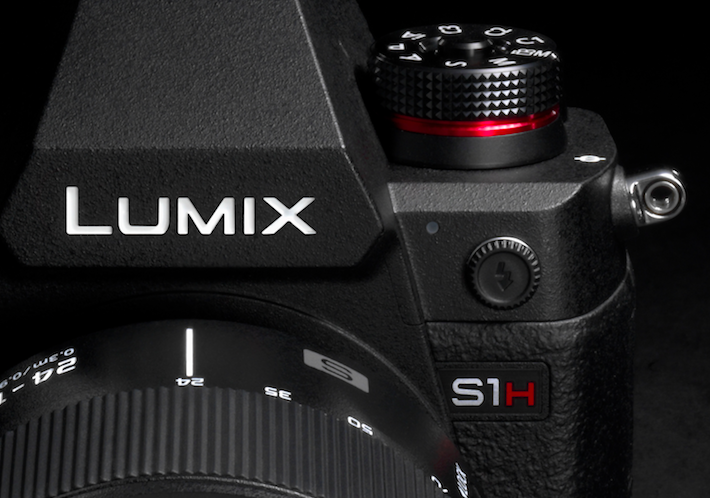
Full frame mirrorless cameras recording 4K video generate a lot of heat. Unlike digital cinema cameras that have large cooling systems and vents to dissipate the heat, mirrorless cameras are weather sealed. This means that there is nowhere for the heat to escape. A lot of full-frame mirrorless cameras suffer from overheating problems when they are recording video.
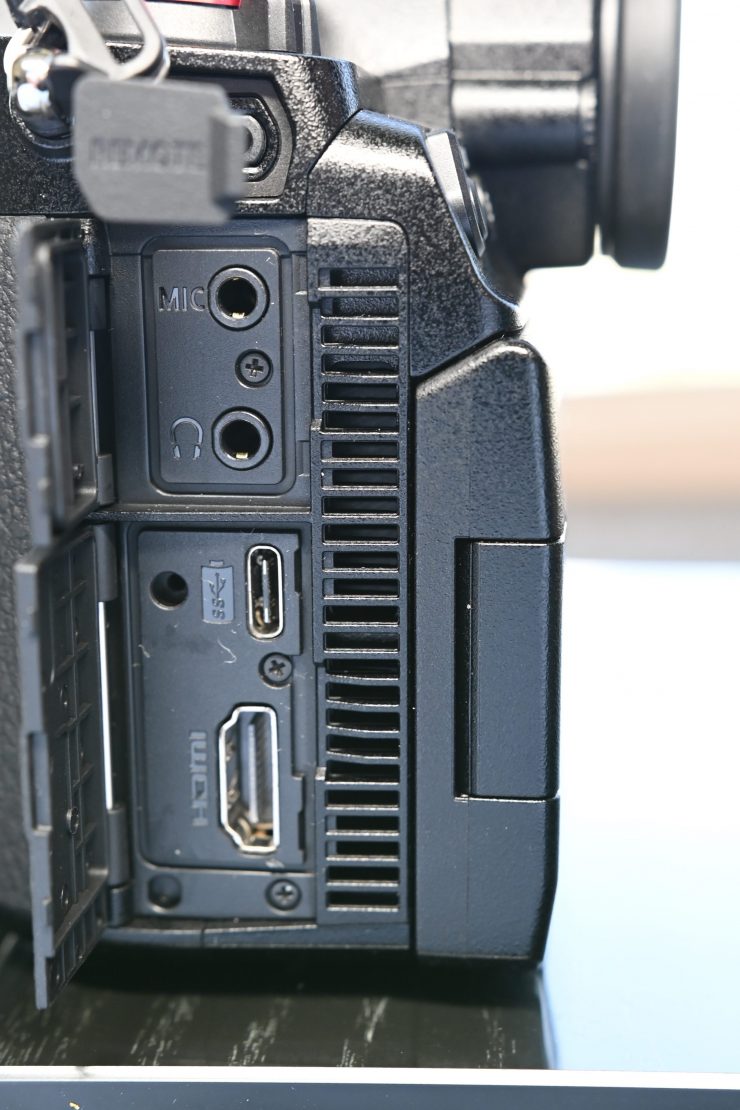
To achieve stable, continuous and extended video recording heat dispersion Panasonic has designed a near-silent cooling fan with an innovative structure that is claimed to efficiently draw heat away from the sensor.
The reason that the body of the S1H is larger than the S1 and S1R is directly due to these heat issues. Having a larger body and a fan helps dissipate heat.
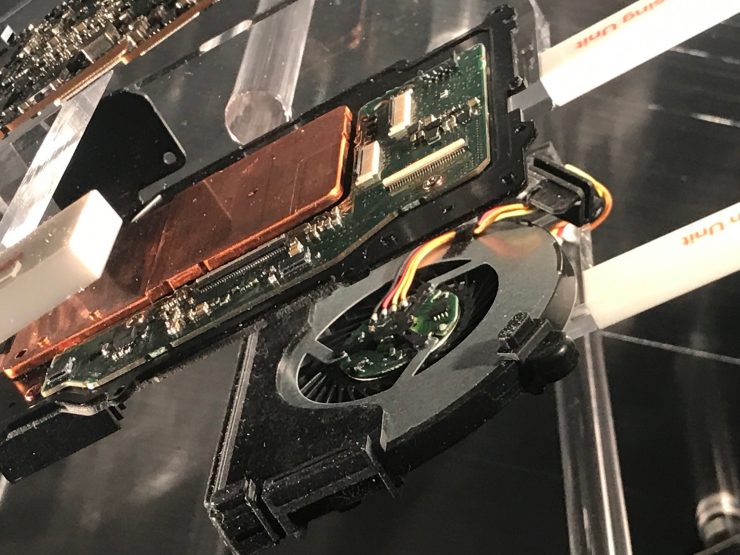
The fan has been designed so that it creates minimal vibration and noise and it can be operated in four different modes.
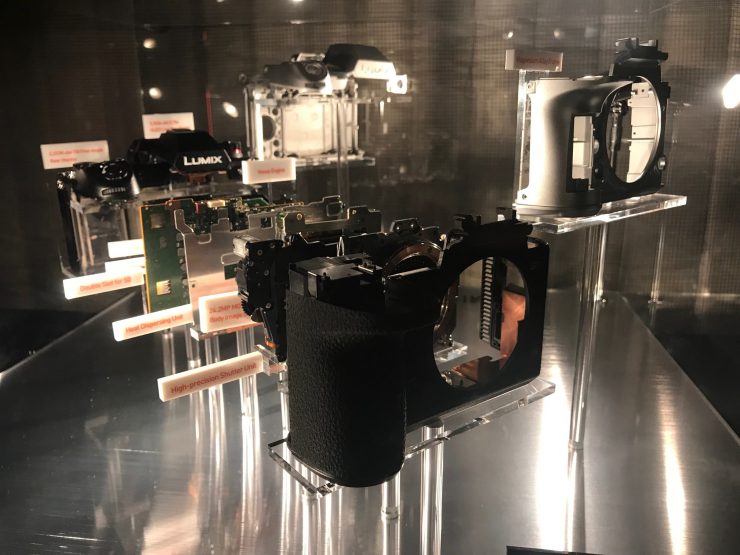
To be tough enough to withstand heavy field use, the main structure of the S1H is composed of magnesium alloy with full die-cast top/front/rear frame. There is a seal for every joint, dial, and button that make the S1H splash resistant, dust resistant, as well as freeze-resistant down to -10 degrees Centigrade.
No RAW
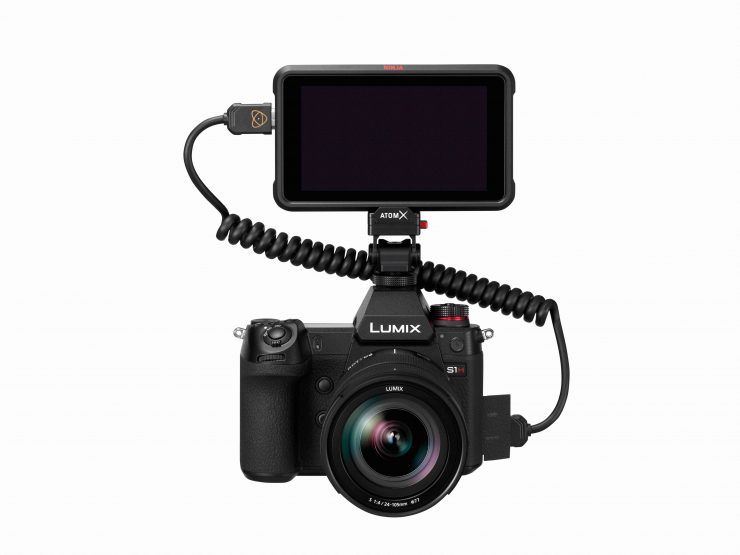
We have started to see quite a few cameras emerge that are capable of recording RAW. While there is no internal RAW recording in the S1H, Pansonic has confirmed to Newsshooter that they are working with Atomos to deliver ProRes RAW via HDMI to an Atomos recorder.
Does the S1H throw a spanner in the works for Panasonic?
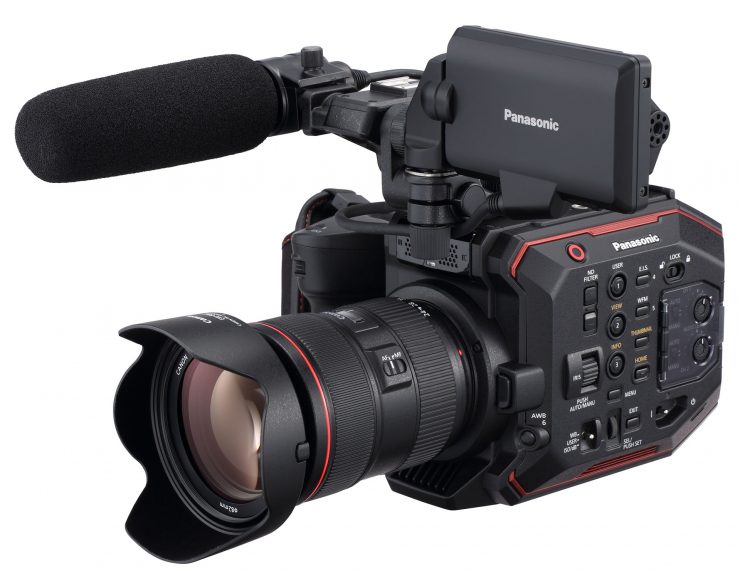
With the S1H being specifically marketed as a film production tool how does this affect other dedicated Panasonic Cinema cameras, especially the EVA1?
It’s very rare to see mainstream manufacturers put features in lower-priced cameras that are as good, if not better than their more expensive offerings.
Even though the S1H offers 4K DCI & UHD 4:2:2 10-bit 60p, 6K, and 5.9K recording, a claimed 14 stops of dynamic range, and V-Log/V-Gamut, it is still missing a lot of features that you get on an EVA1.
The EVA1 has proper onboard audio recording with XLRs, built-in ND filters, external RAW recording, Dual Native ISO, 2K up to 240 fps, and SDI out.
Despite all these extras features, it could be argued that the S1H really starts to blur the lines between a hybrid/mirrorless camera and a cinema camera such as the EVA1.
Back at Cinegear, Panasonic told us that their strategy is to unify the Varicam, EVA1, and Lumix divisions and try and bring them all closer together.
The S1H sets a high bar
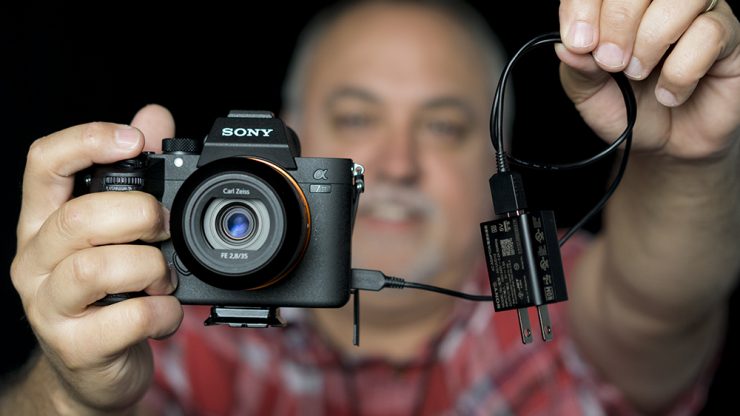
Panasonic is aggressively going after Sony to provide the best available (at least as far as specifications are concerned) full-frame mirrorless cameras for video shooters.
Sony really does seem to have dropped the ball. They had a golden opportunity to keep their crown as the king of mirrorless cameras, but they have so far failed to produce the long-anticipated a7S III.
As everyone is well aware, Sony had a massive jump on the competition when it came to full-frame and APS-C mirrorless cameras. Over the last few years, this jump became a small step, and now you could well argue that they have been leapfrogged by some of the competition. Panasonic, Fujifilm, Nikon, and even Canon (well, sort of) have all caught up.
We have seen it time and time again in our industry where someone who is out in front with not a lot of competition gets complacent and fails to innovate. Canon did this after the initial success of the 5D Mark II and the C300, and now it seems that Sony has done the same thing with their mirrorless range.
That’s not to say the a7S III may not be a great camera, but Sony has left the door open, and now everyone else has crashed the party. In saying all of that, Sony is still firmly entrenched as the market leader in mirrorless cameras. So whether they are genuinely worried about all of this new competition is hard to know.
How does the S1H compare to the S1 for video?
While the S1 is certainly a very capable camera for both stills and video, the S1H is a better choice if you are after a more video-centric camera and don’t mind spending the extra cash.
| LUMIX S1H | LUMIX S1 |
| Sensor: 24.2MP CMOS sensor | Sensor: 24.2MP CMOS sensor |
| Dual Native ISO: Yes | Dual Native ISO: No |
| Video Recording: 6K 24p (3:2 aspect ratio) 4.2.0 10-bit, 5.9K 30p (16:9 aspect ratio), 5.4K (3:2 aspect ratio) ,4K DCI & UHD 10-bit 60p | Video Recording: 4K 60p, 8-bit 4:2:0 internal with APS-C crop, 4K 30p with full frame image, Optional paid update to 4K30P, 10-bit 4:2:2 internal and 4K60P, externally with V-Log. |
| V-Log/VGamut: Yes | V-Log/VGamut: Yes (with optional license key) |
| Recording limit: Unlimited recording in all shooting modes | Recording limit: Yes/No- UHD 4K 60p recording is limited to 29 minutes 59 seconds |
| Headphone & Microphone ports: Yes | Headphone & Microphone ports: Yes |
| HDMI: Yes | HDMI: Yes |
Specs don’t maketh the camera

Having great specifications on paper is one thing, but specifications don’t take pictures and they don’t use the camera. There is a lot of factors that go into what makes a good camera, and specifications are just one of them.
We will be getting hands-on time with an S1H prototype, so stay tuned for our first impressions of the camera.
Who is it aimed at?
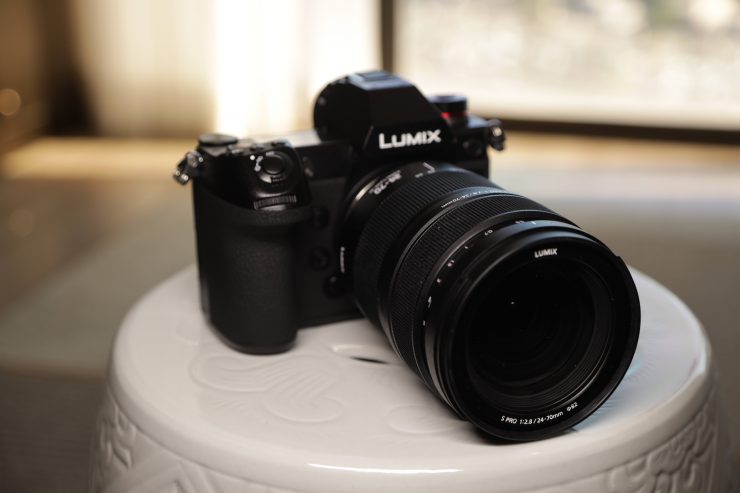
I personally see S1H as being either a camera for those shooters who want to step up to full-frame from say a GH5, or users who like the smaller form factor of a mirrorless camera, but want something more video-centric.
It could also find a place as a B camera to compliment larger digital cinema cameras. If you are a Varicam LT or EVA1 user, the S1H should match up nicely.
The camera will also appeal to those users who want to shoot anamorphic, and have the budget to rent lenses.
As for the competition
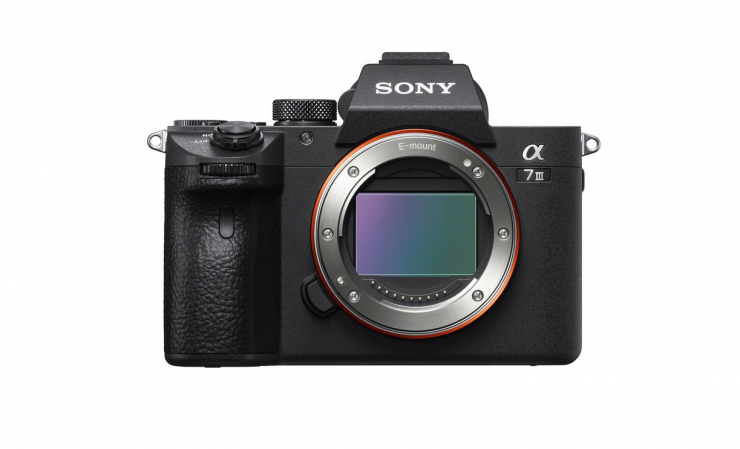
As far as the competition goes if you are looking for a full-frame mirrorless camera to primarily use for video, the best available options are the Panasonic S1, Nikon Z6, Sony a7s II, Sony a7 III, and Canon EOS R.
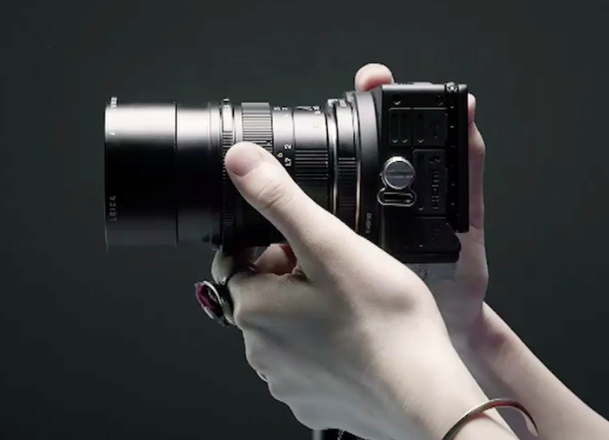
There is also Sigma’s fp pocketable full-frame cine/stills hybrid that is is supposed to start shipping September or early October.
On paper at least, most of these cameras look outclassed by the S1H. In saying that, all of these other cameras are significantly cheaper than what the S1H is going to cost.
Panasonic’s own S1 is $2,499 USD, the Sony a7s II ($1,998 USD), Sony a7 III ($1,998 USD), Nikon Z6 ($1,796.95 USD), and Canon EOS R ($1,999.00 USD) are all closely priced.
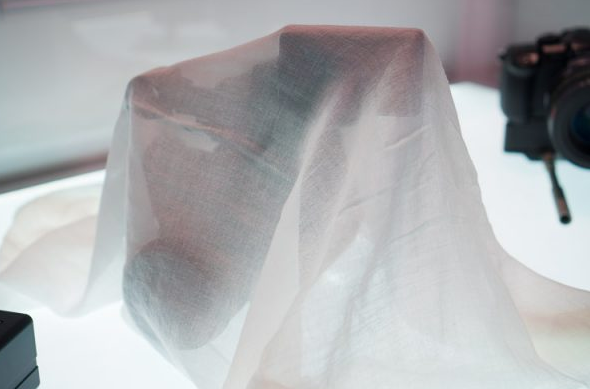
Whether you like Panasonic’s tease strategy or not, that is the way they now seem to market their products. Announce a camera and then try and build up hype by not giving everything away. They did the same thing with the EVA1 and the S1 and S1R.
Price
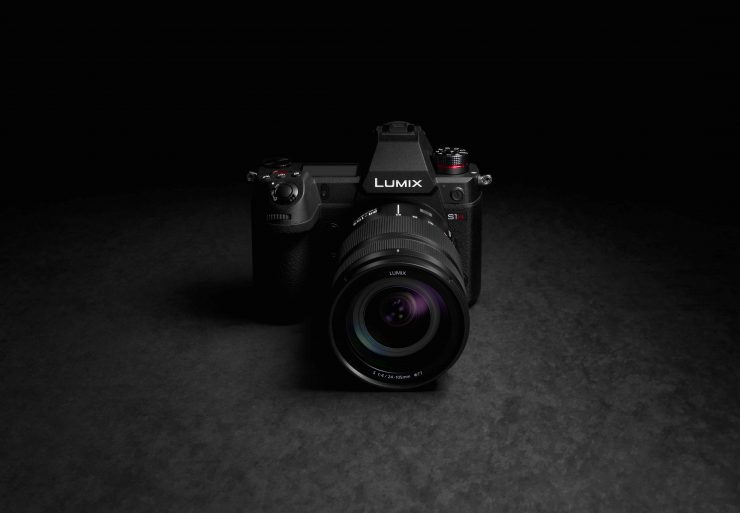
The S1H will retail for $3,999 USD /£3,599.99. It is scheduled to start shipping from the 19th September. This certainly makes it considerably more expensive than the S1 and all of the other full-frame mirrorless cameras you would choose for video. It does, however, offer specifications that currently exceed those of any other available full-frame hybrid mirrorless camera.
A beefed-up S1
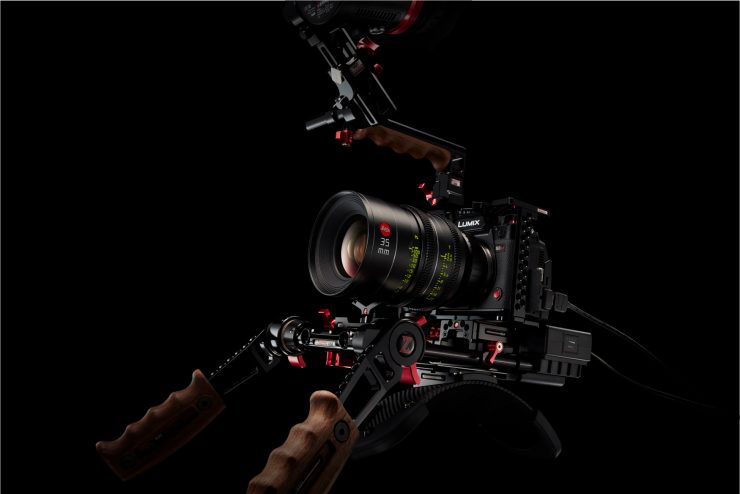
It’s best to think of the S1H as an S1 on steroids. While it is still very much a hybrid mirrorless camera that is suitable for both stills and video, it was designed and developed especially for film production.
At Cinegear we spoke to Yosuke Yamane, Panasonic’s Director of the Imaging Business Division, and the main driving force behind the S1H, and many of Panasonic’s other cameras.
Yosuke told us that Panasonic started the development of full-frame mirrorless cameras 8 years ago. Yosuke envisaged a video-centric full-frame mirrorless camera back at that same time. The actual development of the S1H has been going for the last 1.5 years.
He also told us that the S1H shares a lot of technology from the GH5 and GH5s.
Panasonic also said that they worked very hard on the cooling system and this has enabled the S1H to have unlimited recording times.
In an interesting footnote, Yosuke told us that the technology used to make the S1H possible would likely go into the next versions of the Varicam and the EVA1.
History of innovation
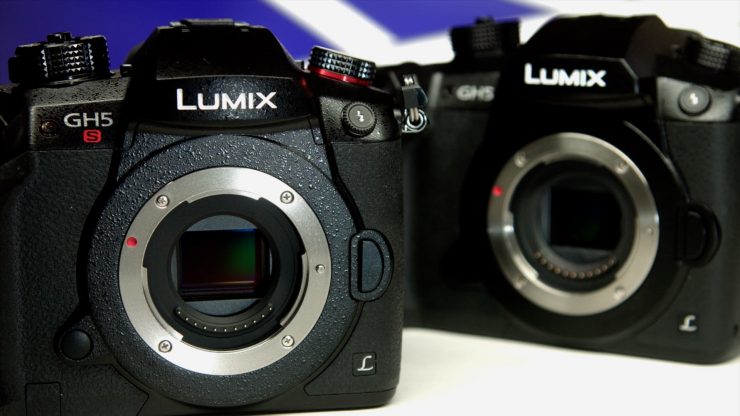
Some of these world-first features are no real surprise if you look back at the history of Panasonic:
- 2009 – The LUMIX GH1 was the World’s first digital single lens mirrorless camera capable of Full-HD AVCHD video recording.
- 2014 – The LUMIX GH4 was the World’s first digital single lens mirrorless camera capable of 4K video recording.
- 2017 – The LUMIX GH5 was the World’s first mirrorless camera capable of 4K/60p, 4:2:2 10-bit 4K/30p recording.
Initial Thoughts
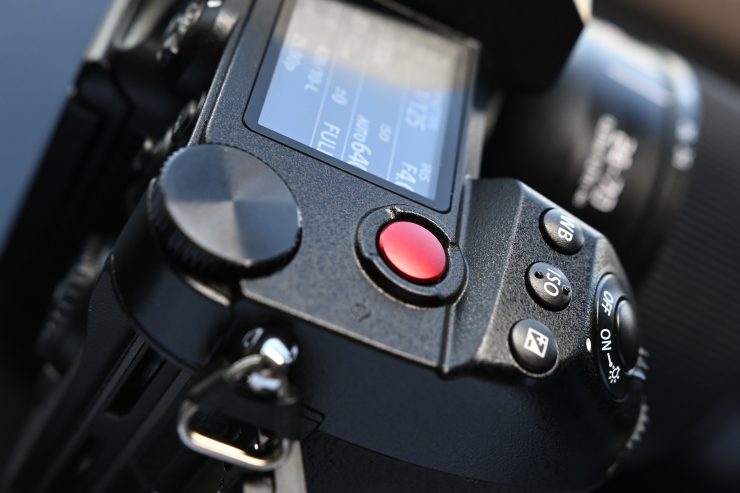
The camera feels very solidly made and the rear LCD screen has been well designed. By making it so that it tilts and fips, you can position the screen in just about any position you want.
The EVF is clear and sharp and it doesn’t seem to suffer from any image lag. The in-body stabilization works really well.
The S1H has pretty impressive specifications, but I have a feeling that the camera will still be met by mixed reactions. I think a lot of potential buyers who were eying the S1H may be disappointed by the lack of 4:2:2 10-bit recording when shooting 4K/UHD 60p using the full size of the sensor. To get 4:2:2 10-bit 60p this has to be done by using a Super 35 sized area of the sensor.
Personally, I think it’s impressive that you can still do 4:2:2 10-bit 4K and UHD at up to 30p on a full-frame mirrorless internally. For most shooters, this should suffice. Throw in two anamorphic modes and the ability to record 5.9K and you certainly get a lot of choice as to what you want to shoot in.
The proof will, of course, be in the pudding. Specifications are just specifications and it will be interesting to see how the camera actually performs.
Panasonic LUMIX S1H at B&H Photo
Full disclosure- Newsshooter and other media representatives were guests at Panasonic’s launch event in Los Angeles. Panasonic paid for transportation and accommodation for this trip. Panasonic did not pay us any money and we have no financial relationship or sponsorship agreement with them.
Like what we do and want to support Newsshooter? Consider becoming a Patreon supporter and help us to continue being the best source of news and reviews for professional tools for the independent filmmaker.

